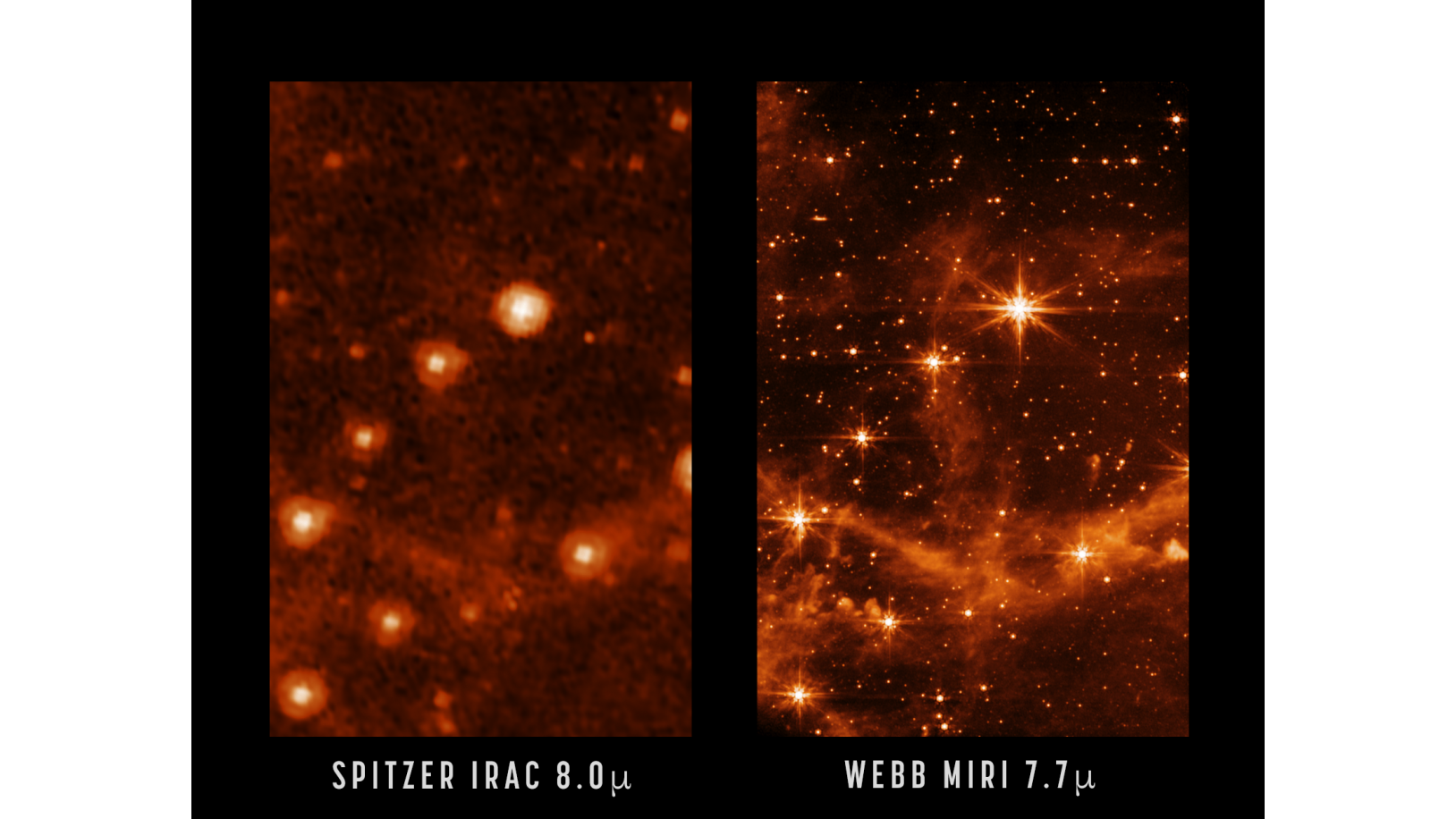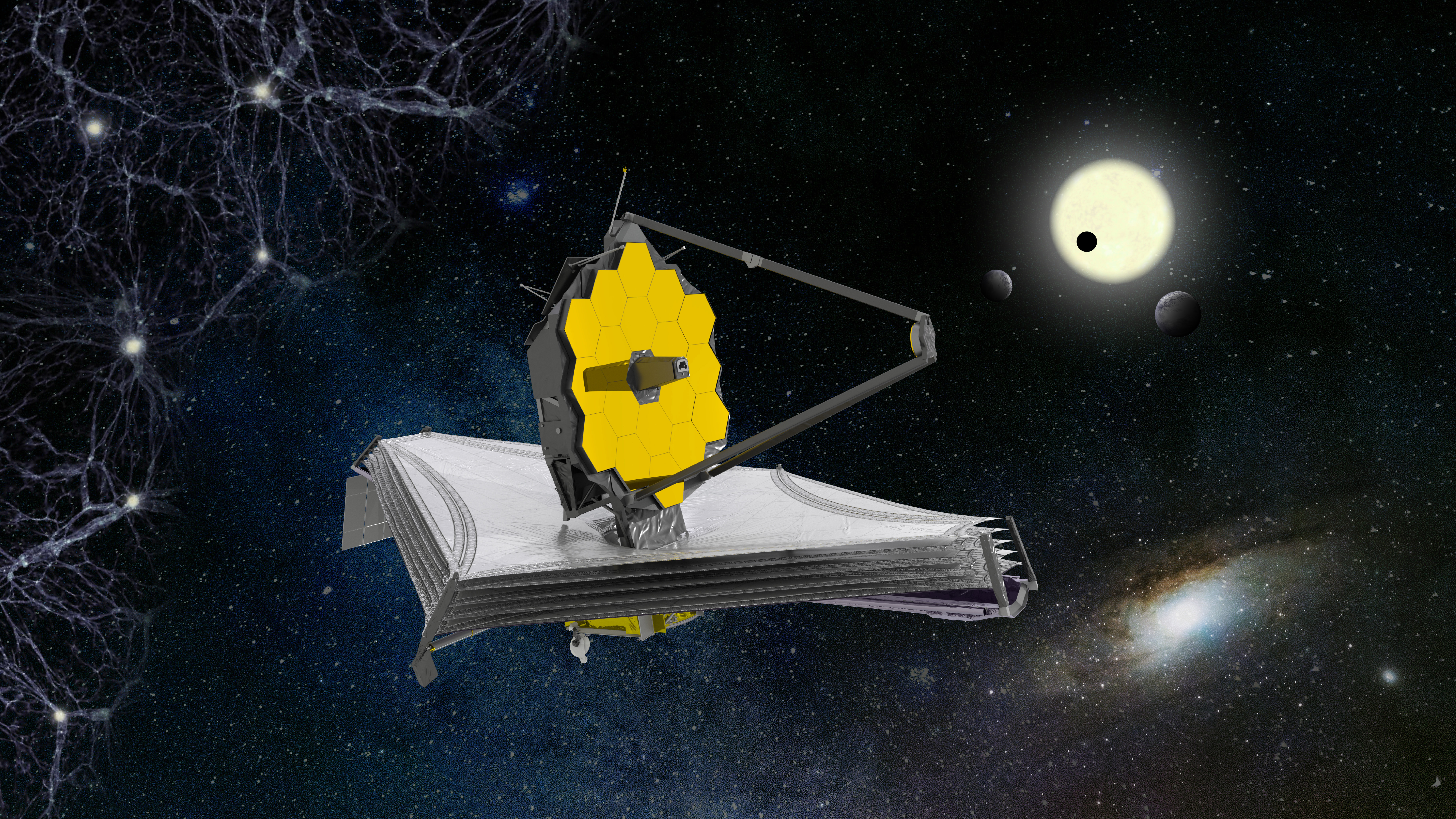James Webb Space Telescope enters 'homestretch' of commissioning with stunning image
We've never seen a neighboring galaxy like this before.
The Large Magellanic Cloud is sharper than ever in the infrared eyes of the James Webb Space Telescope.
As the $10 billion observatory enters the "homestretch" of its commissioning work, according to officials, Webb's latest image showed off the telescope's literally stellar performance using its coldest instrument, the Mid-Infrared Instrument (MIRI).
The new MIRI image showed the chemistry of interstellar gas in the best detail yet, including emission from molecules of carbon and hydrogen called "polycyclic aromatic hydrocarbons," considered some of life's building blocks. This imaging capability is crucial to help Webb understand how stars and protoplanetary systems are formed, officials said during a livestreamed news conference Monday (May 9).
"This is a really nice science example of what Webb will do for us in the coming years," Chris Evans, the telescope's project scientist at the European Space Agency, a partner on the mission, said during the event.
Live updates: NASA's James Webb Space Telescope mission
Related: How the James Webb Space Telescope works in pictures

"We've done a lot of studies of star and planet formation in our own galaxy, but here we're looking at it in the Magellanic Clouds, so small external galaxies, where they're chemically less evolved than our own Milky Way," Evans added. "So this gives us a chance to look at the processes of star and planet formation... in a very different environment to our own galaxy."
The image, taken at 7.7 microns, shows a sharp view of the nearby Large Magellanic Cloud that is a dwarf galaxy neighbor to the Milky Way. Alongside the Webb image, engineers re-released an image from the now-retired Spitzer Space Telescope at 8.0 microns. Spitzer was a pioneer in its day in generating high-resolution images of the near- and mid-infrared universe, but Webb is much more powerful.
Get the Space.com Newsletter
Breaking space news, the latest updates on rocket launches, skywatching events and more!
Spitzer did "amazing things," Evans said, but he noted that observatory was limited by its spatial resolution, as it was optimized for wide-field surveys that capture celestial objects in context.
By comparison, Webb's detailed, close-up perspective will provide "an amazing view of the processes in a different galaxy for the first time, cutting through the dust," Evans said. "We're using the mid-infrared to look through the material that otherwise would be obscured at visible wavelengths."
In addition, Webb has a much larger primary mirror, improved detectors and a superior observation point when compared with Spitzer; the now-retired telescope used to operate in an Earth-trailing orbit, as opposed to Webb's orbit at Earth-sun Lagrange point 2, about 930,000 miles (1.5 million kilometers) away. These factors will allow the new telescope to access infrared information with more clarity than its predecessor.

Webb has been clicking through commissioning milestones with few issues. Engineers are now in the final tweaking stages to the instruments, now that all of the mirrors have cooled to the deep-space temperatures that infrared observations require.
The LMC was identified as an ideal release target given that the Hubble Space Telescope and other observatories have studied it before. Knowing the locations of the galaxy's stars is a key advantage for scientists, Michael McElwain, Webb observatory project scientist at NASA's Goddard Space Flight Center in Maryland, said in the same press conference.
"We can use them [the stars] for astrometric calibrations," he explained, adding that this is important to calibrate the science instruments. "Of course, these images are also very spectacular."
In the near future, mission personnel will also test Webb's ability to track objects in the solar system, such as planets, satellites, rings, asteroids and comets. Scientists will be focused on making sure Webb can do this properly, given that the observatory is particularly sensitive to starlight.
"We will also measure changes in the telescope alignment as we point the telescope to different locations," Evans said. To test this, Webb will soon swing between slightly hotter and colder attitudes, so everyone can learn how quickly its mirrors heat up and cool down as the observatory slews in space.
While officials still have not released information on which commissioning target Webb will focus on first when its testing work completes, they emphasized the observatory remains on schedule to begin its early release science this summer.
"When this phase is complete, we'll be ready to turn the science instruments loose on the universe," Evans said.
Follow Elizabeth Howell on Twitter @howellspace. Follow us on Twitter @Spacedotcom and on Facebook.
Join our Space Forums to keep talking space on the latest missions, night sky and more! And if you have a news tip, correction or comment, let us know at: community@space.com.

Elizabeth Howell (she/her), Ph.D., was a staff writer in the spaceflight channel between 2022 and 2024 specializing in Canadian space news. She was contributing writer for Space.com for 10 years from 2012 to 2024. Elizabeth's reporting includes multiple exclusives with the White House, leading world coverage about a lost-and-found space tomato on the International Space Station, witnessing five human spaceflight launches on two continents, flying parabolic, working inside a spacesuit, and participating in a simulated Mars mission. Her latest book, "Why Am I Taller?" (ECW Press, 2022) is co-written with astronaut Dave Williams.









